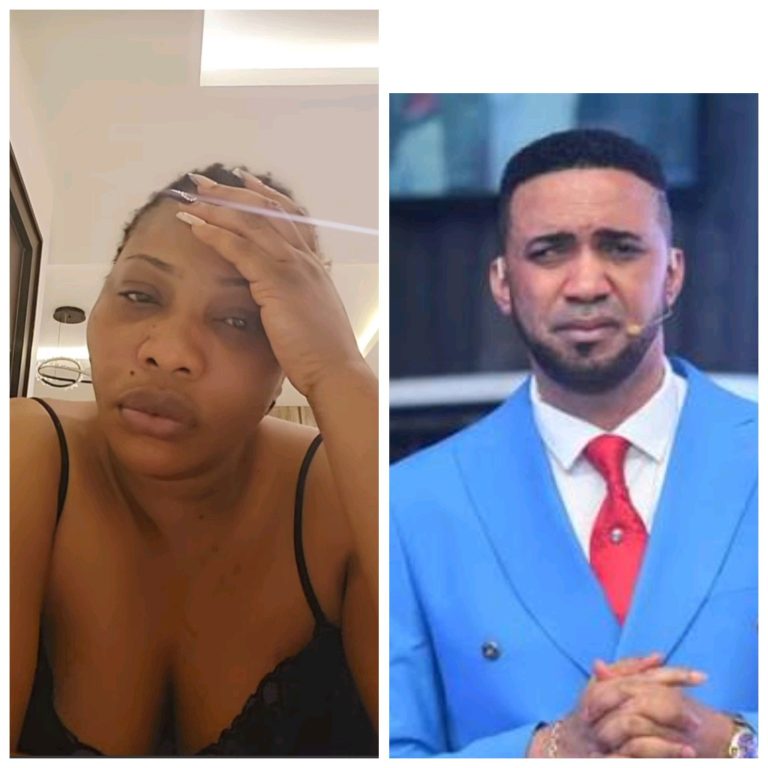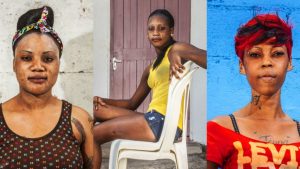Living with vitiligo (a condition that disrupts the uniformity of one’s skin) in Ghana can be very solitary and traumatising, says Enam Honya, a model, who is campaigning to end discrimination by challenging beauty stereotypes in the fashion and modelling industry.
When the skin colour of the late pop icon Michael Jackson dramatically changed, many accused him of bleaching and betraying his blackness.
Granted, Michael had undergone a medical procedure by the 1990s to alter his skin colour, but what critics did not know was that Jackson had a condition that was slowly but surely already altering his skin.
Vitiligo is a skin condition that destructs the melanocytes; which are pigment cells. The condition causes depigmentation of the skin resulting in noticeable white spots on a person’s skin. Although vitiligo affects all races, its presence is pronounce among people with dark or brown complexion. About two percent of the world’s population has vitiligo.
“Every time we went to the hospital, the doctors said there was nothing wrong with me. But this ‘thing’ kept spreading”, says Enam Heikeens Honya, a vitiligo ambassador in Ghana.
By modelling, Enam is hoping to challenge beauty stereotypes.
Her first patches emerged when she was seven years old. The family roamed hospitals in Ghana and abroad in search of answers on what was a strange condition to them at the time. This ‘thing’ turned out to be vitiligo, which in Enam’s case had been passed on genetically.
Honya, 24, says living with vitiligo can be a very isolating and traumatising experience.
“Growing up wasn’t easy…People really stigmatised. You have to go to school and people will not even like to talk to you.” she articulated, ” You go to an occasion and people wouldn’t like to shake hands with you. Even your course mates wouldn’t like to sit beside you or go to lunch break with you.”
One day a woman shouted ‘witch! witch!’ upon seeing Enam on a bus.
Ending it all
The rejection got to Enam and on three occasions, she attempted suicide.
“It was something depressing for me and there came a point in time when I wanted to commit suicide; to just end it all there. Fortunately for me it couldn’t happen. I have tried it three times just to get rid of myself, knowing that people don’t accept me.”
“The last one was just a miracle because I was just at the verge of doing it and I got saved. And [that experience] even led me to know more about vitiligo, to learn and research more about it. I think it was breakthrough for me.”

A Nightingale
Honya’s day job is in the health service as a nurse in Ho, Volta Region, which she describes as an ‘awesome feeling’.

Enam Honya works as a nurse in Ho, Volta Region.
“After senior high school (at Keta Business Senior High School), I decided that since vitiligo is health related, why don’t I go and learn about health, details about my skin and have a fair idea of the anatomy of the human body?”
“You get to meet your patients asking questions [about vitiligo] and you have the opportunity to explain it to them. It’s one awesome feeling. Though some patients really get weird with the questions, I believe it is just one way of telling them that no matter your skin colour, you can be who you want to be.
[Also] kids get scared when I am attending to them at first… At the end of the day, some of the children even like to play with my skin.”
However, there have been times that her service has been rejected by patients because of her skin.

“[In one of the cases] I had to explain to the other nurse on duty that ‘it is Patients Right and [that the patient] said I shouldn’t attend to her so can you kindly go and attend to her?’ I went back later on and I tried to educate her about vitiligo and she said she was sorry and that she didn’t know. Though you feel bad, you just have to get along with it because they don’t know.”
Some of the nuggets of information Enam dispenses to her patients include the fact that vitiligo is not contagious, not the same as albinism, nor the result of an acid attack or sorcery.
Social media, especially the photo sharing platform Instagram, is also helping Enam broaden the education about vitiligo.
Challenging beauty stereotypes
Before donning the green and white, she had and still has dreams of working in television. She reckoned it would be an uphill task getting a job in the media because of her skin condition.
She has ventured into the glossy and superficial world of the fashion and modelling industry which she hopes would be a stepping stone to the mainstream media. Her aim is to challenge the concept of beauty in Ghanaian society.

By modelling, Enam is hoping to challenge beauty stereotypes
“What really sparked my interest in modelling was that I really want to tell the world about my skin. I really want to tell people that modelling is not all about being slim, being black, being of uniformed skin. You can equally be unique, you can equally make a difference in the modelling industry despite your skin colour or how tall or short you are. You can make a difference.”

By modelling, Enam is hoping to challenge beauty stereotypes (Philus Modeling Agency)
She has worked with designers such as Quame Owusu, Afiyo Creations and Vogo Designs, a Nigeria-based fashion label founded by Ogo Maduewesi, a leading global advocate for vitiligo awareness.

Through her work with VITSAF Ghana, Enam brings other people with vitiligo together in order to support each other.
Enam the advocate
A chance meeting with the campaigner Love Violent (also living with vitiligo), introduced Enam to the world of advocacy through the Vitiligo Support and Awareness Foundation (VITSAF Ghana).

Enam Honya leading a march on World Vitiligo Day on June 25, 2016 (Ghana Health Nest/Kobby Blay)
“What I really hope to achieve with my advocacy is that I want each and every person with vitiligo to stand proud, be unique in their own way and standing to achieve what they want to be in life despite what people might say or the discrimination [they face] and have the kind of fulfilment that an individual with vitiligo can really stand proud and achieve something unique.”
Despite the unbridled and sometimes unnerving stares from ordinary Ghanaians, Enam Honya is steadfast in her decision to reject treatment.
Although vitiligo cannot be cured, there are treatment therapies that can greatly improve a person’s physical appearance. According to Enam, 92 percent of her body has turned pale and as such doctors have recommended depigmentation to her; but she is determined to ‘leave the skin the way it is to inspire and educate people.’
ATTENTION! ATTENTION!! ATTENTION!!! ADVERTISE ON TOKTOK9JA AND REACH OUT TO YOUR DESIRED AUDIENCE: HERE
Discover more from TOKTOK9JA MEDIA
Subscribe to get the latest posts sent to your email.































